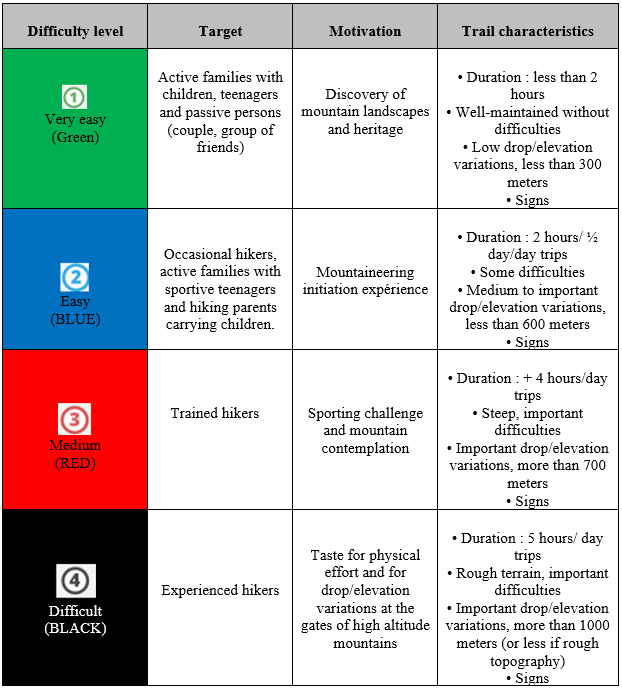Before leaving
Download your hikes offline
Before arriving at the location of the chosen trail, don’t forget to authorize app notifications in order to receive information during your hike and to download your itinerary offline so that you can consult it during your journey, at any time without a 4G connection (be geolocated and receive educational information).
Advice from experienced hikers
- Find the location of your itinerary and check the access to the trails of the area
- Download the itinerary offline
- Make sure that the difficulty of the trail matches with your physical condition
- Find out about the weather conditions before your departure (cross several weather forecasts)
- Inform a relative of your journey
- Be fully equipped with hiking boots and warm, waterproof clothing
- Don't forget to take water with you, as well as something to eat and sun protection
- Don’t leave rubbish (or toilet paper) behind and do not light a fire
- To limit the trampling of vegetation and soil erosion, do not use shortcuts
HIKING DIFFICULTY LEVELS
The durations and difficulties mentioned in the description of the trails are guide values. These are specified in the search engine which offers a selection by difficulty level.
- Very easy: walks of less than 2 hours and 6 km without particular difficulties, rather suitable for families with children.
- Easy: hikes between 2 and 3 hours with a maximum drop/elevation variation of about 400m. Itineraries suitable for occasional hikers, active families and hiking parents carrying children.
- Medium: one day trips, from 3 to 5 hours, for hikers used to steep trails with drop/elevation variations of more than 400 m.
- Difficult: hikes lasting more than 5 hours, intended for experienced and athletic long distances walkers and with important drop/elevation variations on rough alpine terrain.

Useful information and emergencies :
Mountain rescue : 112
Livestock guardian dogs
These are livestock guardian dogs, their presence is allowed in nature reserves. They defend sheep and ewes from larger predator attacks, such as wolfs. Often large sized dogs, qualified as "molossoid", they spend their lives protecting herds to which they are very attached.
When approaching the herd, it’s very important to observe carefully the dog’s behavior and to take it in account while respecting the following instructions:
- Stay away from the herd (bypass it if possible)
- Announce your presence by speaking out loud to avoid surprising the herd and dogs
- Keep calm and avoid sudden movements, keep walking without running. Talk gently to the dogs so that they get used to your presence and accept it
- Avoid looking straight into the dog’s eyes and hold an object between you and the dog
